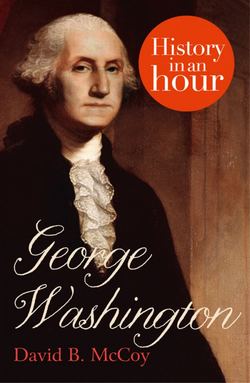Читать книгу George Washington: History in an Hour - David McCoy B. - Страница 8
ОглавлениеMarriage and Gentleman Farmer
On 6 January 1759, George Washington married Martha Dandridge, the widow of Daniel Parke Custis. Martha was the mother of two children and possessed one of the largest fortunes in Virginia. The marriage was harmonious and one of happiness, but not one of romantic love. While not highly educated, Martha was an intelligent, dignified hostess and experienced in managing a plantation. It is difficult to form a more detailed picture of their relationship, because Martha burned all their letters soon after his death. As a stepfather, Washington lavished great affection and care upon Martha’s children. Together, they produced no children. Again, some speculate that this may have been due to Washington’s former bout of smallpox that may have left him sterile.
Martha, John (Jack), George and Martha (Patsy)
The marriage raised Washington from a moderately wealthy planter to the top of Virginia’s planter class. Turning his attention away from a military life, he now devoted his energies to perfecting the elegant lifestyle of a Virginian aristocrat. With his new status, he became a member of the House of Burgesses and for several years served as Justice of the Peace for Fairfax County. He also played a prominent role in the social life of Tidewater (the eastern area of Virginia). He enjoyed plays, fox hunting, dancing, and entertaining guests at Mount Vernon.
Unwilling to grant his appointed managers complete control of his farms, Washington made a point of riding to each farm every day. He took the art of farming seriously and experimented with new crops, fertilizers, crop rotation, tools and livestock breeding. By the 1760s, well before his fellow planters, he concluded that tobacco was less than profitable, in part because tobacco was harsh on regional soils, but also because English merchants insisted on paying planters a fraction of tobacco’s true market value.
Boston Tea Party
The arrangement of buying and selling in the South was relatively simple. Wealthy planters ordered clothing, furniture, dishes, wines, spices, and carriages from London merchants, and these merchants purchased tobacco. But due to reduced prices paid for tobacco and the increasing cost of British goods, Washington’s fellow planters found themselves in debt. Refusing to play this losing game, he switched from growing tobacco as a primary cash crop to growing wheat and corn. He would further diversify his operations by adding flour milling, commercial fishing and weaving. These products were then sold throughout the American colonies. He still purchased London-made products, but now bought them from colonial importers with whom he could negotiate reasonable prices. Forced into such drastic changes only exacerbated the resentment he already felt toward the ‘Mother Country’.
